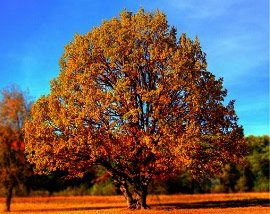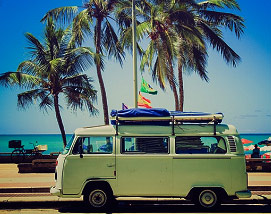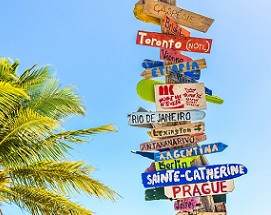Coorg, officially known as Kodagu district, is a one of the most visited hill stations in south India. One picturesque ridge after the other, enveloped in green primeval forests, beckon the travellers. Coorg has a rich landscape of sightseeing attractions and experiential stays for the tourists. Whether you seek an idyllic backdrop for your honeymoon, or you wish to undertake thrilling adventure activities with like-minded enthusiasts, Coorg Tourism has a lot to offer to everyone. The mountains are etched with excellent trekking routes along famous rivers, waterfalls and peaks. The region is teeming with exotic wildlife in its many sanctuaries and the Nilgiri Biosphere reserve. The biodiversity of Coorg has a unique feature that you would love to explore – its enchanting coffee and spice estates.
Often called the ‘Scotland of India’, Coorg enjoys prime location in the south-western part of Karnataka state. Sitting atop steep hills of the Western Ghats, it has Mysuru tablelands to its north and pristine Wayanad to its south. The district map is often called ‘ a baby’s shoe’ lovingly as its shape resembles the knitted boots of an infant. The forested areas of Western Coorg are semi and wet evergreen whereas Eastern Coorg has dry and moist deciduous forests. Madikeri, spread over 4,102 sq. km along National Highway 275, is the district headquarters of Coorg. It is at an average elevation of 3825 feet.
Coorg has a tropical highland climate with slight to medium humidity. The high precipitation despite its elevation is a result of Coorg’s proximity to the western coastline of India and the presence of a biosphere reserve. The region experiences an average annual rainfall of 2552 mm, with heavy showers in June, July and August. The undulating terrain doesn’t let water accumulate thus resulting in a higher runoff.
The average low temperature is 10° Celsius in December-January and the average high is 35°Celsius in April-May. However, it is important to note that the record minimum temperature of Coorg is 4.5°Celsius. Summers are humid with temperature reaching above 40°Celsius at times. The humidity is at its lowest in January (50-60%) and highest in July (85-98%). It is to be noted that the high humidity and cloud percentage levels in July have been on a gradual decline over the past ten years. Months from December to February draw the maximum number of tourists, as the weather is cool, crisp and conducive for long outdoor hours.
In mythology Coorg was known by three names – Brahmakshetra, Matsyadesha and Krodadesha. History of Coorg has been recorded since 2nd CE in Tamil Sangam Literature. The early agriculturist members of the Kodava community are known to be the native settlers of Coorg. Since the 10th CE, various rulers of the Kadamba, Chola and Hoysala dynasties ruled it. Haleri Rajas (1600-1834) were one of the last royal kingdoms to fall before it was taken over by Hyder Ali, Tippu Sultan and finally the British.
The variegated core of Coorg’s folk literature, dance and music is based on festive occasions and harvest seasons. Kodavada Pattole Palame is a compendium of Kodava ballads, tales and traditions. Huttari and Yakshgana are two important dance forms. Being the origin and catchment of river Cauvery, Coorg attracts a lot of pilgrims during the Tula Sankramana period of the year. If you are fashion curious then you’ll notice that ladies in Coorg wear the saree in a unique way. The locals will be more than happy to teach you the traditional saree draping technique, if you wish to try.
Coorg Tourism has a rich repertoire of travel destinations. It is a spectacular melting pot of many geographical facets. Where else will you find lower hills, higher mountain peaks, grassy glades, upland plateaus, elongated ridges, mighty rivers, forested valleys and vast cultivated plantations at one place? Some of the absolutely unmissable tourist attractions of Coorg are:
- Abbey and Iruppu waterfalls
- Namdroling Monastery at Bylakuppe
- Quad biking at Kushalnagar
- Nisargdhama deer park
- Dubare elephant camp
- Nagarhole National Park
- Coffee estate tours and homestays (Madikeri/ Virajpet)
- Tadiandamol and Kumar Parvatha treks
- Barapole white-water rafting
- Madikeri town
- Talacauvery
Want to get caught off guard, in a good way? Take a break from your usual comfort food and go on a culinary adventure. Try the delicious Pandi Curry, a specialty pork dish of the Kodava cuisine. Its tangy sauce is infused with homegrown spices kachampuli condiment. Spicy chicken koli curry, chicken and beans (koli kuru), fish and crabs are a favourite in the kitchens. Coorg is synonymous with paddy. The staple rice sannakki is eaten as string hoppers (nooputtu), rice dumplings (kadambuttu), baked cakes (otti), flat breads (akki roti) and plain steamed rice. Are you a vegetarian wondering how you are going to survive in Coorg? You are in for a surprise of bamboo shoot curry, freshly prepared vegetable dishes and chutneys made of just roasted spices.
Cauvery Sankramana, in mid-October, is a sacred day when a large number of pilgrims visit Talacauvery. Kanni Puje prayers are offered by Kodava women. Losar, the Tibetan New Year, is celebrated with reverence and gusto in and around the Tibetan settlements of Namdroling monastery. Puttari (Huttari) is a harvest festival that observes the ‘rite of cutting paddy’ with decorations, feasts and festivities in ancestral homes.
Coorg Tourism is an elegant celebration of culture and nature. Enjoy it to the fullest by connecting with us at SOTC on Facebook, Twitter, Instagram and do check out amazing Coorg tour packages and Karnataka tour packages.














